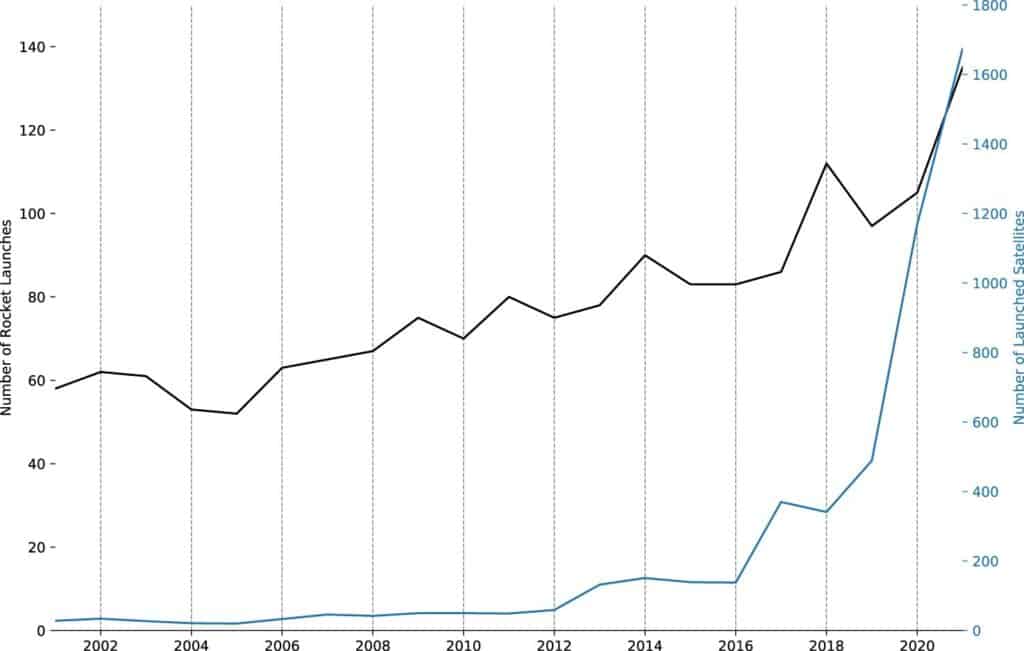Whether it’s a string of Starlink satellites crossing the suburban sky, or the unsettling mystery over spy balloons and unidentified objects, people are paying attention to what’s launched above our heads. So are researchers in New Zealand who warn that the risk of ozone layer damage is rising with the demand for so many more rocket launches.
Global annual launches ranged between 90 to 130 in the past five years, says Dr. Michele Bannister and the University of Canterbury team. “Satellite telecommunications, remote sensing applications, and other scientific and commercial enterprises have spurred the need for space launch providers and supportive infrastructure,” they explain in their new paper, published this month in the Journal of the Royal Society of New Zealand.
While the expense of deploying reusable rockets is coming down, making launches more frequent and more common, those rocket launches come at a cost to the health of Earth’s stratosphere.
The industry currently relies on four major rocket fuel types: liquid kerosene, cryogenic, hypergolic and solid. When rockets are launched using these propellants, the result is a mix of gas and particle emissions that includes carbon dioxide, black carbon, nitrogen oxides and other substances.
There’s still a lot that’s not known about rocket launch impacts on the ozone layer, 90% of which lies in the stratosphere layer of the atmosphere, between 15 and 50 kilometers (km) above Earth’s surface. However, some estimates suggest that two-thirds of all rocket launch emissions are injected at the level above 15 km. There’s a possibility that they remain present longer at this atmospheric height, causing harmful impacts even in relatively small amounts.
The Canterbury scientists note that ozone layer protection has been a global environmental success story since implementation of the Montreal Protocol placed curbs on chlorofluorocarbon damage caused by solvents and refrigerants, and with decreases in methane emissions. Yet those gains could be reversed by routine rocket launches, especially as the industry explores newly emerging methane fuels.
“Many rocket engines currently in development have opted for methane fuel, including SpaceX’s Starship, Rocketlab’s Neutron, and the ESA Arianespace Ariane Next,” the authors said. “As yet, the emissions products of methane fuel are poorly understood and not experimentally quantified.”
Bannister and her colleagues see the aspirational power of rocket deployment, but they also identify the charismatic quality of space technology. It often limits any challenge made to the utopian promises about the future of space exploration and its applications.
“This narrative power can flatten the potential for nuanced discussion of how rockets can best be forged into the tools that we wish to have to achieve certain outcomes – from exploration throughout the solar system to a thriving near-Earth space economy,” the scientists said.
Communications, space tourism initiatives, and even future shipping technologies will only drive industry demand. So they call for coordinated global action to protect the upper atmosphere, with companies tracking emissions and making the data available to ozone researchers with an eye toward optimal rocket design.
“Creating sustainable global rocket launches is going to take coordination across aerospace companies, scientists, and governments: it is achievable, but we need to start now,” says Bannister. “This is our chance to get ahead of the game.”

Did you like it? 4.5/5 (20)








